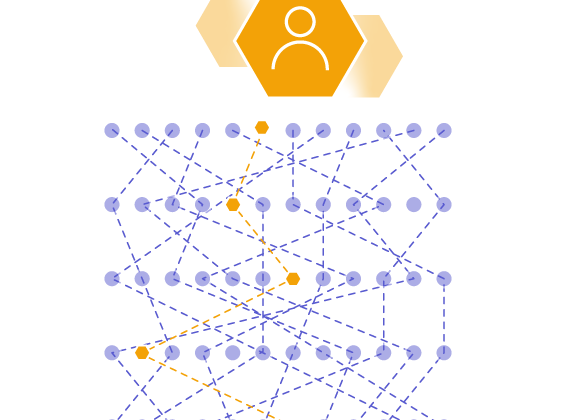Peculiarities of Azure .NET Core
Azure and .NET Core are two powerful technologies that, when combined, offer a robust environment for developing, deploying, and managing applications. Azure, Microsoft’s cloud platform, provides a wide array of services, while .NET Core is a versatile, open-source framework for building cross-platform applications. Understanding the peculiarities of using Azure with .NET Core is crucial for developers looking to leverage the full potential of these technologies.
Understanding Azure
What is Azure?
Azure is Microsoft’s cloud computing platform and service. It offers a range of cloud services, including those for computing, analytics, storage, and networking. Users can pick and choose from these services to develop and scale new applications or run existing applications in the public cloud.
Key Features of Azure
Azure boasts a multitude of features, such as:
- Scalability: Seamlessly scale applications up or down.
- Global Reach: Data centers in various regions worldwide.
- Security: Comprehensive compliance and security features.
- AI and Machine Learning: Advanced tools for AI development.
- DevOps Support: Tools for continuous integration and deployment.
Introduction to .NET Core
What is .NET Core?
.NET Core is a free, cross-platform, open-source framework developed by Microsoft. It is used for building modern, scalable, and high-performance applications. Unlike its predecessor, the .NET Framework, .NET Core supports multiple platforms, including Windows, macOS, and Linux.
Evolution from .NET Framework to .NET Core
The transition from .NET Framework to .NET Core marks a significant shift towards openness and cross-platform compatibility. .NET Core is designed for modern cloud-based applications and microservices, making it a preferred choice for developers today.
Why Combine Azure and .NET Core?
Benefits of Using Azure with .NET Core
Combining Azure with .NET Core offers several benefits:
- Seamless Integration: Native support for .NET Core applications on Azure.
- Scalability: Effortless scaling with Azure’s robust infrastructure.
- Cost Efficiency: Pay-as-you-go pricing models and cost management tools.
- Enhanced Security: Comprehensive security features and compliance certifications.
- Flexibility: Supports various application architectures, including microservices and serverless computing.
Real-World Applications
From e-commerce platforms to financial services, many enterprises utilize Azure and .NET Core to create scalable, secure, and high-performance applications. Companies like Stack Overflow, Jet.com, and UPS have successfully implemented these technologies to achieve their business goals.
Deployment in Azure
Deployment Methods for .NET Core Applications
Deploying .NET Core applications to Azure can be done using various methods:
- Azure App Service: An easy-to-use service for hosting web apps.
- Azure Kubernetes Service (AKS): For containerized applications.
- Virtual Machines: For more control over the OS and environment.
Continuous Integration and Continuous Deployment (CI/CD)
Azure DevOps provides a comprehensive suite of tools for CI/CD. By setting up pipelines, developers can automate the deployment process, ensuring consistent and reliable delivery of applications.
Scalability and Performance
Scaling .NET Core Applications on Azure
Azure’s auto-scaling capabilities allow .NET Core applications to handle varying loads efficiently. By configuring auto-scaling rules, applications can automatically adjust resources based on demand, ensuring optimal performance without over-provisioning.
Performance Tuning Tips
- Optimize Code: Ensure efficient coding practices.
- Caching: Use Azure Cache for Redis to reduce database load.
- Monitoring: Regularly monitor application performance and address bottlenecks promptly.
Security Considerations
Security Features of Azure for .NET Core Apps
Azure provides a robust security framework that includes:
- Azure Security Center: A unified infrastructure security management system.
- Identity and Access Management: Azure Active Directory for secure access.
- Data Encryption: Both at rest and in transit.
Best Practices for Securing Applications
- Regular Updates: Keep all components updated.
- Use Managed Services: Leverage Azure-managed services for added security.
- Implement Strong Authentication: Use multi-factor authentication (MFA).
Cost Management
Understanding Azure Pricing
Azure’s pricing model is based on a pay-as-you-go approach, allowing businesses to only pay for the resources they use. Understanding the pricing structure is essential for effective cost management.
Cost Optimization Strategies for .NET Core Applications
- Right-sizing Resources: Match resources to actual demand.
- Utilize Azure Cost Management Tools: Tools like Azure Cost Management + Billing help track and manage expenses.
- Take Advantage of Reserved Instances: Save on long-term commitments.
Database Integration
Azure Database Options
Azure offers various database solutions, including:
- Azure SQL Database: A fully managed relational database.
- Cosmos DB: A globally distributed, multi-model database.
- Azure Database for PostgreSQL/MySQL: Managed open-source databases.
Integrating .NET Core with Azure Databases
.NET Core seamlessly integrates with Azure databases using Entity Framework Core or direct database access methods, ensuring smooth data operations and migrations.
Serverless Computing with Azure Functions
Introduction to Azure Functions
Azure Functions is a serverless computing service that allows developers to run code on-demand without managing infrastructure. It supports a range of programming languages, including C# for .NET Core.
Using Azure Functions with .NET Core
With Azure Functions, .NET Core developers can build event-driven solutions that scale automatically, reducing operational overhead and improving efficiency.
Microservices Architecture
Building Microservices with .NET Core on Azure
Microservices architecture involves developing applications as a collection of loosely coupled services. .NET Core’s lightweight nature and modular design make it ideal for microservices.
Service Fabric and Kubernetes
Azure Service Fabric and Azure Kubernetes Service (AKS) are powerful tools for orchestrating microservices, providing scalability, resilience, and simplified management.
Monitoring and Diagnostics
Monitoring Tools in Azure
Azure offers a suite of monitoring tools, such as:
- Azure Monitor: Comprehensive monitoring and analytics.
- Application Insights: Real-time application performance monitoring.
- Log Analytics: Collect and analyze log data.
Diagnostics for .NET Core Applications
Effective diagnostics involve setting up logging, tracing, and profiling to identify and resolve issues quickly. Azure’s diagnostic tools integrate seamlessly with .NET Core applications.
DevOps and Automation
Azure DevOps for .NET Core
Azure DevOps provides tools for planning, developing, delivering, and monitoring applications. Features include:
- Azure Repos: Git repositories for source control.
- Azure Pipelines: CI/CD pipelines for automated builds and deployments.
- Azure Artifacts: Package management.
Automating Workflows
Automation reduces manual intervention and enhances efficiency. Using Azure DevOps, developers can automate tasks like code builds, testing, and deployments, ensuring a smooth development lifecycle.
Case Studies
Successful Implementations of Azure and .NET Core
Numerous organizations have successfully implemented Azure and .NET Core to achieve significant improvements in performance, scalability, and cost efficiency. Examples include:
- Stack Overflow: Enhanced scalability and performance.
- Jet.com: Improved cost efficiency and operational agility.
- UPS: Robust, scalable logistics solutions.
Lessons Learned
Key takeaways from these implementations include the importance of:
- Thorough Planning: Strategic planning and resource allocation.
- Continuous Monitoring: Regular performance and security monitoring.
- Flexibility: Being adaptable to changing requirements and technologies.
Conclusion
Azure and .NET Core together provide a powerful platform for building, deploying, and managing modern applications. Their combined strengths in scalability, security, and performance make them an ideal choice for developers and businesses alike. By understanding their peculiarities and leveraging best practices, you can unlock the full potential of these technologies for your projects.
FAQs
What are the advantages of using .NET Core with Azure?
Using .NET Core with Azure offers seamless integration, scalability, enhanced security, and cost efficiency. It supports modern application architectures like microservices and serverless computing, providing a robust environment for development and deployment.
How does Azure handle .NET Core application scaling?
Azure handles .NET Core application scaling through auto-scaling features, which automatically adjust resources based on demand. This ensures optimal performance and cost efficiency without manual intervention.
What security measures are in place for .NET Core on Azure?
Azure provides comprehensive security measures, including Azure Security Center, Azure Active Directory for identity and access management, and data encryption both at rest and in transit. Following best practices like regular updates and using managed services enhances security further.
Can I use Azure DevOps with .NET Core?
Yes, Azure DevOps offers a suite of tools specifically designed for .NET Core, including source control (Azure Repos), CI/CD pipelines (Azure Pipelines), and package management (Azure Artifacts). These tools streamline the development and deployment processes.
What are some common challenges when using .NET Core on Azure?
Common challenges include managing costs effectively, ensuring optimal performance, and maintaining security. However, leveraging Azure’s built-in tools and best practices can help mitigate these challenges.
Related Posts
Leave a Reply Cancel reply
Service
Categories
- DEVELOPMENT (104)
- DEVOPS (53)
- FRAMEWORKS (27)
- IT (25)
- QA (14)
- SECURITY (14)
- SOFTWARE (13)
- UI/UX (6)
- Uncategorized (8)




